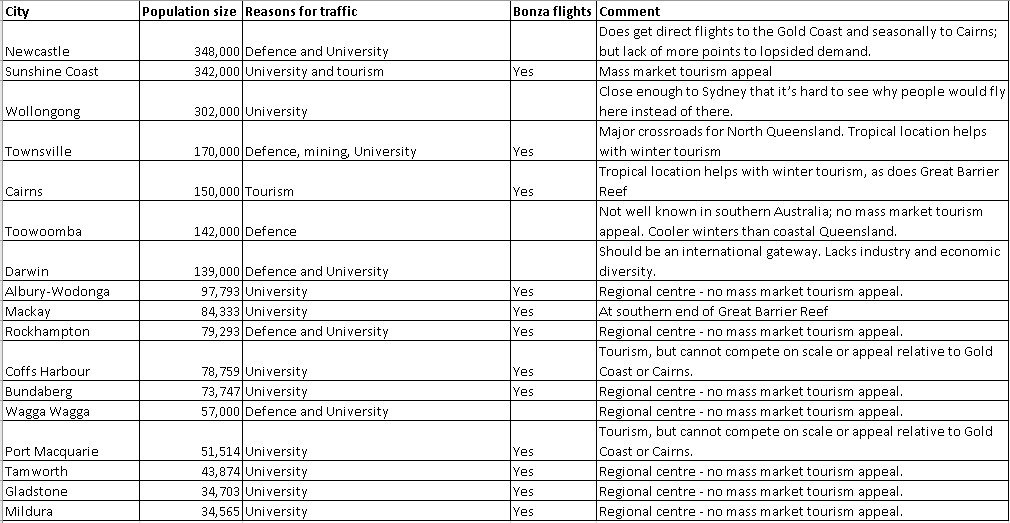Which Australian regional flight routes are actually viable?
In recent months, two domestic Australian airlines have collapsed. Bonza was a newcomer, with the laudable aim of trying to give better access to regional passengers. Rex was a longstanding operator that delivered people from regional cities into the capital cities, and bit off more than it could chew when it tried to compete with bigger airlines on those capital city routes.
None of this is simple, and I‘m not going to get into policy discussions here. What I am interested in is the economics; what does the actual underlying demand for domestic flights look like?
Airlines carry three main passenger types:
• Business (includes government, Defence and Universities). These people need to travel on a regular basis, especially to and from the capital cities.
• VFR – Visiting Friends and Relatives. Anywhere with a sizeable community that has family connections to a related sizeable community will create a two-way traffic flow. I’d argue that these two groups provide a floor to visitor numbers, as they are less able to be substituted for other modes of transport, or other destinations. Which leads us to…
• Tourists. For an airline to be able to offer services to a range of different cities, it has to have a powerful, year-round reason for people to want to go there. In essence, it has to appeal to a mass market. In my mind, outside of the state capitals, only Cairns or the Gold Coast have achieved this in Australia.
To test this last idea, I have outlined below where Bonza flew against various medium-sized cities across Australia.
Table developed from personal views. Population figures taken from Wikipedia; mostly stem from 2021 ABS Census figures. Bonza flight status sourced from https://australianaviation.com.au/2022/02/revealed-bonza-will-fly-25-routes-to-16-destinations/ on 4 August 2024.
While there’s nothing scientific about my table, there appears to be only a handful of viable domestic air routes that don’t involve the capital cities. Cities need to have a distinctly different tourism offering to each other to stimulate demand. This may be why there are no flights between Newcastle/Townsville or Newcastle/Toowoomba, despite all of these cities being of a reasonable size.
Lower prices come with competition, and that comes from lower unit costs; a virtuous circle. But it’s also about elasticity of demand - how powerful is the tourism draw, and how many people can afford the cost of it?
To my annoyance, I couldn’t easily find annual incomes for each of these cities. But I suspect that you need a pool of people earning over $60,000 annually to sustain a market big enough to fly. How big is that pool? Well, it has to be enough people to fill a plane in both directions on at least a weekly basis, and, given that it won’t be the same plane load of people every week, I think it’s a safe bet that you have to multiply that base number by at least a factor of four.
Another useful question is to ask, who lives in these regional cities, as the vast majority of Australian migrants settle in the capital cities When they’re not using their holidays to fly overseas, migrants (like everyone else) have a good reason to fly to places where they have relatives. However, what reason do migrants have to travel domestically beyond this? Do migrant travel patterns eventually resemble Anglo-Saxon travel patterns? If they do, how long does it take for such a thing to happen, and what are the catalysts that cause the shift?
As such, I wonder if Rex or Bonza actually effectively communicated to these people? If these airlines assumed that population growth by itself is going to grow domestic tourism demand, then they deserve to go bankrupt for thinking in such an insular manner. If many migrants have never heard of Tamworth or Mackay, and have little interest in finding out what such places have to offer, who do the airlines think will be their customer base in 10 years’ time?
What do you think?







